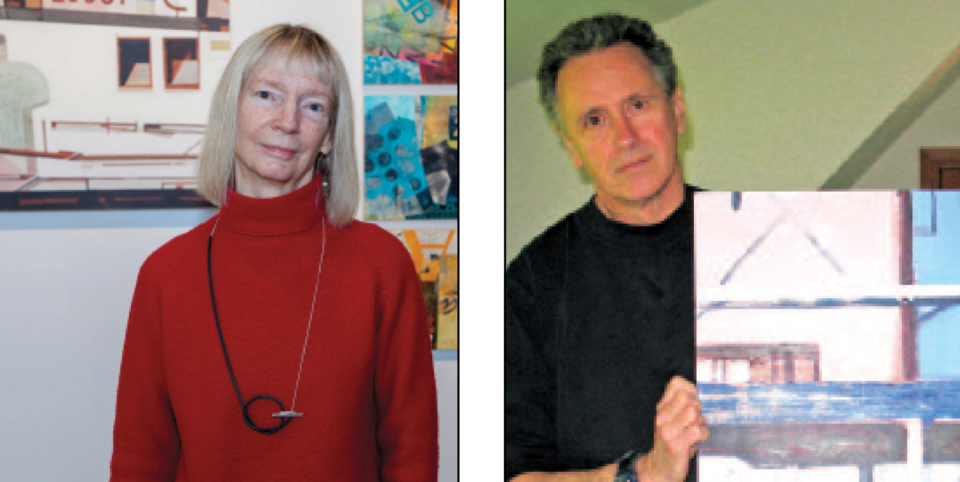A visual conversation anchored in the maritime culture of British Columbia’s West Coast forms the basis of the current exhibit at The Kube gallery in uptown Gibsons, which features local artists Jennifer Love and Kim LaFave.Gallery owners Jill Pilon and Jody Youngren curated the exhibit under the title Dialogue. The name emphasizes parallels in the artworks of Love and
LaFave while nodding at the circuitous process that eventually led to the month-long show.
In 2020, Love and LaFave were preparing separate presentations for simultaneous display at a different gallery when the allure of co-exhibiting at The Kube triggered a unique opportunity.
“It wasn’t a collaboration, exactly,” admits Love. “They’re independently-created works. We ended up sharing the space, intermingling things.”
LaFave paints with acrylic on wood panels. Love has cultivated a passion for monoprinting with synthetic gelatin plates, a technique that produces painterly artworks from an ever-changing template. The method allows the use of textiles and three-dimensional objects to create the plate.
The geometric cohesion of their works, which occupy the southeast walls of The Kube’s expansive shop and studio building, belies a turbulent month. “Between Omicron and snow, this has been crazy,” said Love. “On our artist meet-and-greet day, it was turning into a blizzard. Kim couldn’t come, and we closed early.”
LaFave, who was unavailable for an interview, is a nationally-recognized illustrator and artist based in Roberts Creek. He won the Governor General’s Award for English-language children’s illustration in 1988, a distinction followed by numerous other awards and nominations in the decades since.
LaFave’s illustrations for author Gary Kent’s 2010 book Fishing With Gubby chronicled—with scrupulously-researched accuracy—life in the West Coast commercial fishing industry.
Love, a Gibsons resident, approached two-dimensional art from a different direction. “I was for many years a quilter,” she said. “In recent years I switched to printing, and really enjoy the immediate nature of printing on paper using textiles. Patterns are very pleasing and interesting to me. Order and randomness, applied in an abstract manner, appeal to a lot of people.”
Although they are abstracts, the works by LaFave and Love unmistakably evoke nautical culture. Their palettes reflect the rusty patina of aged vessels and the sunlit spectrum of a sailor’s day. Both artists occasionally integrate typographic features, jumbles of characters whose oblique angles suggest a vessel’s registration number sighted across a heaving sea.
For Love, the dissolution of language also carries personal significance. “To me, [the shapes and letters] represent fragments of memory,” she said. “And this is influenced by the fact that both my parents experienced either dementia or Alzheimer’s disease. So it’s forever in the back of my mind.”
As a former Pender Harbour marina owner, she has “a kind of complicated relationship with the ocean. I spent quite a bit of time with [my husband] out on the water, and I’m not always comfortable with it. So I have kind of a love-hate relationship with the water and that is in my work too, particularly in this show.”
The titles of her prints—including Batten Down the Hatches and her Mayday in the Marina series—testify to the ocean’s capricious temperament. Similarly, each of LaFave’s paintings offer beguiling details of steel and saltwater whose unruly vastness seems to extend beyond the frame’s boundary.
Dialogue is open to the public at The Kube gallery until January 31.



